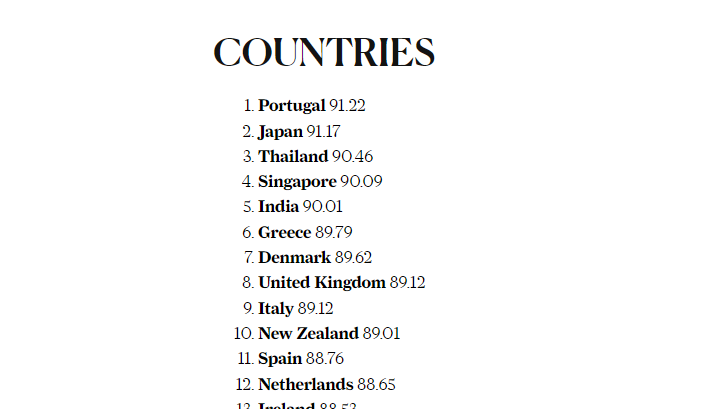Study Abroad for Free: As university fees continue to rise in many parts of the world, you may wonder how to obtain a recognized degree, whether in your home country or abroad, without a substantial budget or a scholarship. It might seem impossible, but options are available to help you study abroad without incurring significant costs.
You’ll be pleased to hear that this isn’t necessarily the case. There are many countries worldwide where students can study abroad for free or for a very affordable amount. You just need to know where to look.
Below you’ll find a selection of countries that offer low-cost or free tuition, with details on eligibility and what current (low) university fees you can expect.
Table of Contents
Study in Germany for free
Interest in studying abroad in Germany continues to increase. This growth is primarily due to the absence of undergraduate tuition fees at most public universities in the country. This policy applies to German and international students, regardless of nationality. Students must only pay a nominal fee of about €150 to €250 (approximately US$170 to US$280) to cover administrative costs.
The exception is the state of Baden-Württemberg in southwest Germany, which reintroduced tuition fees for non-EU/EEA students in autumn 2017. These students must pay €1,500 (~US$1,660) a semester (€3,000 or ~US$3,320 per year). PhD students and refugees aren’t affected, and the fees are reduced for those pursuing a second degree (to €650 (~US$720) a semester, which is €1,300 (~US$1,440) a year. Other German states may follow and reintroduce fees as they seek to invest in and improve university education, so watch out for this.
Germany boasts low tuition fees, a strong economy, and a high-quality higher education system, making it an appealing destination for students and their families around the globe. Over 40 German universities are recognized among the top institutions in the QS World University Rankings, with only the US and UK featuring more. The Technical University of Munich holds the highest position among German universities.
If you successfully find a university where you can study in Germany for free, you will still need to budget for living costs. If you are applying for a German student visa, you must demonstrate that you have approximately €10,236 (~US$11,330) each year to cover living expenses, as the average student spends around €850 (~US$940) monthly.
Munich and Berlin are among the top destinations for studying in Germany and are ranked within the top 30 most affordable cities.
Study in France for free (or at low cost)
While France may not be as widely recognized as Germany for affordable higher education, international students may be surprised to learn that they can also study in France for free or at a very low cost, regardless of their nationality.
Public universities in France impose tuition fees; however, these fees are considerably lower than those in many other countries. The annual fee for undergraduate students from the EU, EEA, and Switzerland is merely €170 (approximately US$190).
Starting from the 2019/20 academic year, non-EU/EEA students will face increased tuition fees to €2,770 (approximately US$3,065) per year for a bachelor’s degree. However, the Frencbachelor’snt plans to triple the number of scholarships available to international students, increasing the total from 7,000 to 21,000.
Additional charges can increase the cost of your studies, especially for specialized programs such as medicine and engineering, though not significantly. If you plan to study at a top grande école, be prepared for a wide variation in fees.
In Germany, most programs that offer the opportunity to study in France for free are conducted in French. However, an increasing number of English programs are available, especially at the graduate level. Alternatively, you can enroll in a preparatory school to improve your French skills before starting your degree, but this option requires payment.
Living costs in France are relatively affordable, averaging around €9,600 (approximately US$10,620) per year. However, if you choose to live in the capital city, Paris, you should expect to pay more.
Study in the Nordic countries
The Nordic countries—Denmark, Finland, Iceland, Norway, and Sweden—are renowned for their high quality of life, breathtaking natural landscapes, and liberal political views. Additionally, they are home to some of the world’s strongest higher education systems. These nations offer students the opportunity to study either for free or at a low cost.
Norway offers an incredible opportunity for students from all over the world. University education is completely free, regardless of nationality or study level! While students do pay a small semester fee, usually between approximately US$33 and US$66, the benefits are immense.
Most undergraduate programs are taught in Norwegian, and international students must demonstrate their language skills to enroll. However, the exciting news is that at the master’s and PhD levels, English-taugmaster’sams are widely available, and yes, you still enjoy the benefit of free tuition! What a fantastic way to advance your education and experience Norway’s vibrant culture!
Iceland’s universities charge tuition fees, with only a yearly registration fee of around ISK 75,000 (~US$600).
Denmark, Sweden, and most recently, Finland only extended their free higher education perks to students from within the EU/EEA and Switzerland, meaning that students from outside these regions must pay tuition fees for bachelor’s and master’s programs. Howbachelor’ sprogrmaster’ shese countries are fully funded, offering exceptional PhD candidates the chance to gain their degree without paying fees and earning a salary. Non-EU/EEA students can also still study in Finland for free if they study in either Swedish or Finnish.
International fees at bachelor and master levels in Denmark, Sweden and Finland vary. In Denmark, university fees range from between DKK 45,000 and DKK 120,000 (~US$6,670-17,800) annually, while in Sweden, they fall between SEK 80,000 and SEK 145,000 (~US$8,200-14,870) for most courses. In Finland, the recently introduced tuition fees currently amount to at least €1,500 (~US$1,700) per year, although most students will pay between €6,000 – 18,000 (~US$6,640-19,900) per year.
Other places to study in Europe
What about other places to study in Europe for free or at a low cost? A number of European countries offer affordable or free universities without any need to sacrifice quality. See below for more examples.
Austria
Austria is another country where students can study in Europe for free (or at a very low cost). EU/EEA students enjoy the same rights as Austrians regarding the cost of higher education and can study for free at any degree level.
After this time, students pay a fee of just €363 per semester. International students outside the EU/EEA should expect slightly higher fees of around €726 (~US$803) per semester. Living costs will set all students back at approximately €11,400 (~US$12,600) annually. Vienna, Austria’s capital city, was ranked 13Austria’s QS Best Student Cities 2019.
Belgium
Belgium has two primary language communities, each with a stance on university fees. However, EU students will pay a maximum of only €906 a year. And while it’s just EU students who get the significant benefits of studying in Europe for free, fees are still reasonably affordable for non-.
Czech Republic
Students who speak Czech can study abroad for free in the Czech Republic at any public university. Students who wish to study in English can also study reasonably cheaply, at around €4,000-12,000 (~US$4,425-13,275) per year. Living costs are more affordable than in many Western European countries, at around US$9,000 annually. Prague, the Czech capital city, is ranked joint 35th in the QS Best Student Cities.
Greece
All students from within the EU/EEA can study abroad for free in Greece at public universities and colleges, with the exception of some master’s programs. International studmasters outside the EU are also eligible for low-cost higher education, at approximately €1,500 (~US$1,660) per year. Greece offers one of the lowest living costs in the European Union.
Italy
Although private universities in Italy can be known to charge pretty high tuition fees, public universities in Italy are markedly cheaper, charging between €900 and €4,000 (~US$995-4,420) per year for undergraduate programs. Milan is ranked 40th in the most recent QS Best Student Cities, while the capital city, Rome, is 70th.
EU students are eligible for the same funding opportunities as Italian students, including loans, grants, scholarships and fee waivers.
Spain
EU students aren’t required to pay for higher educationaren’tin Spain, while international students can study for between €750 and €2,500 (~US$830-2,760) per year at public institutions. Fees are charged per-credit basis and can be higher at the graduate level.
To live in Spain, you should expect to spend between €10,800 and €13,200 (~US$11,940 – 14,600) a year in living costs. Madrid, Barcelona and Valencia are all featured in the QS Best Student Cities, with Barcelona the highest ranked at 21st.






